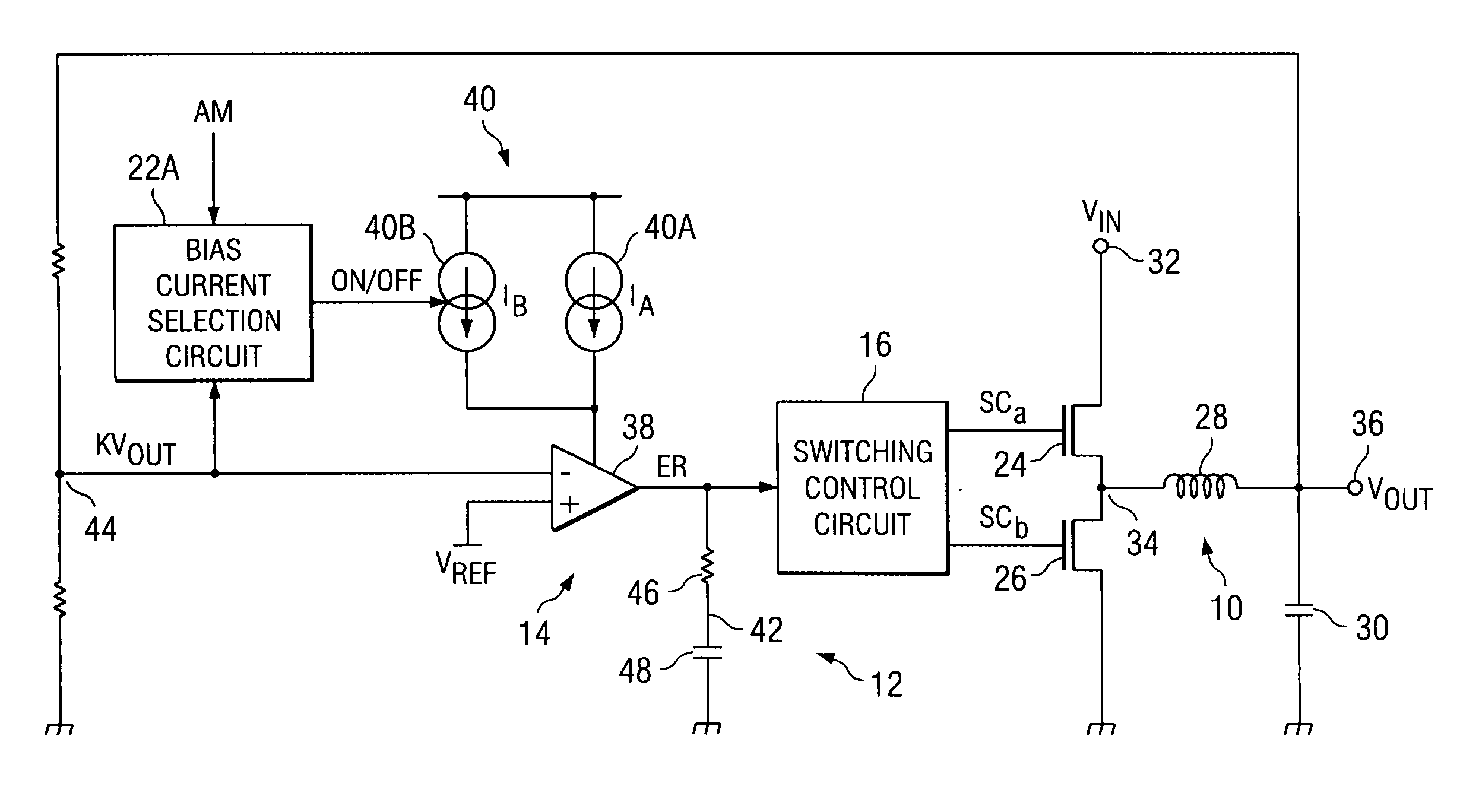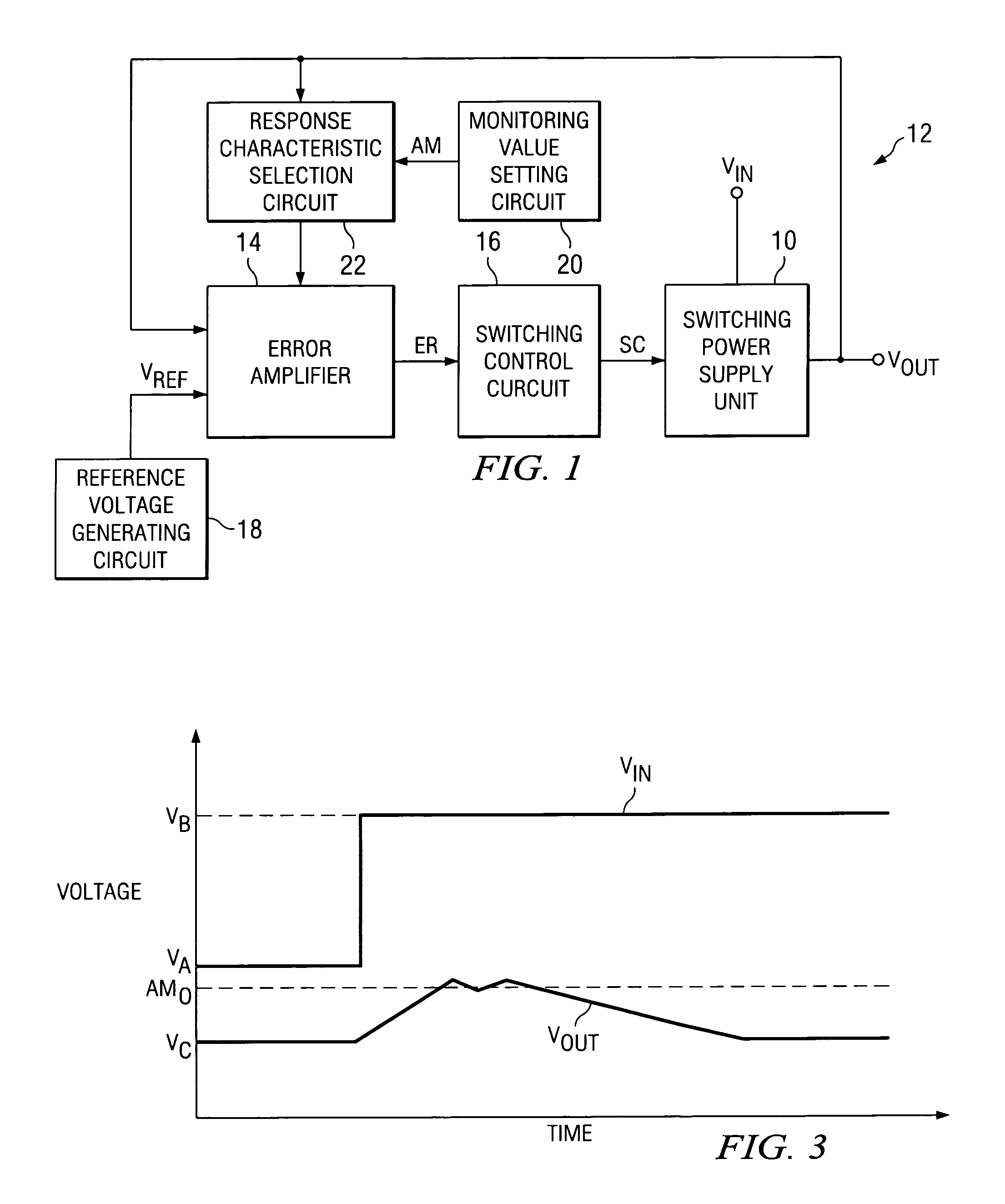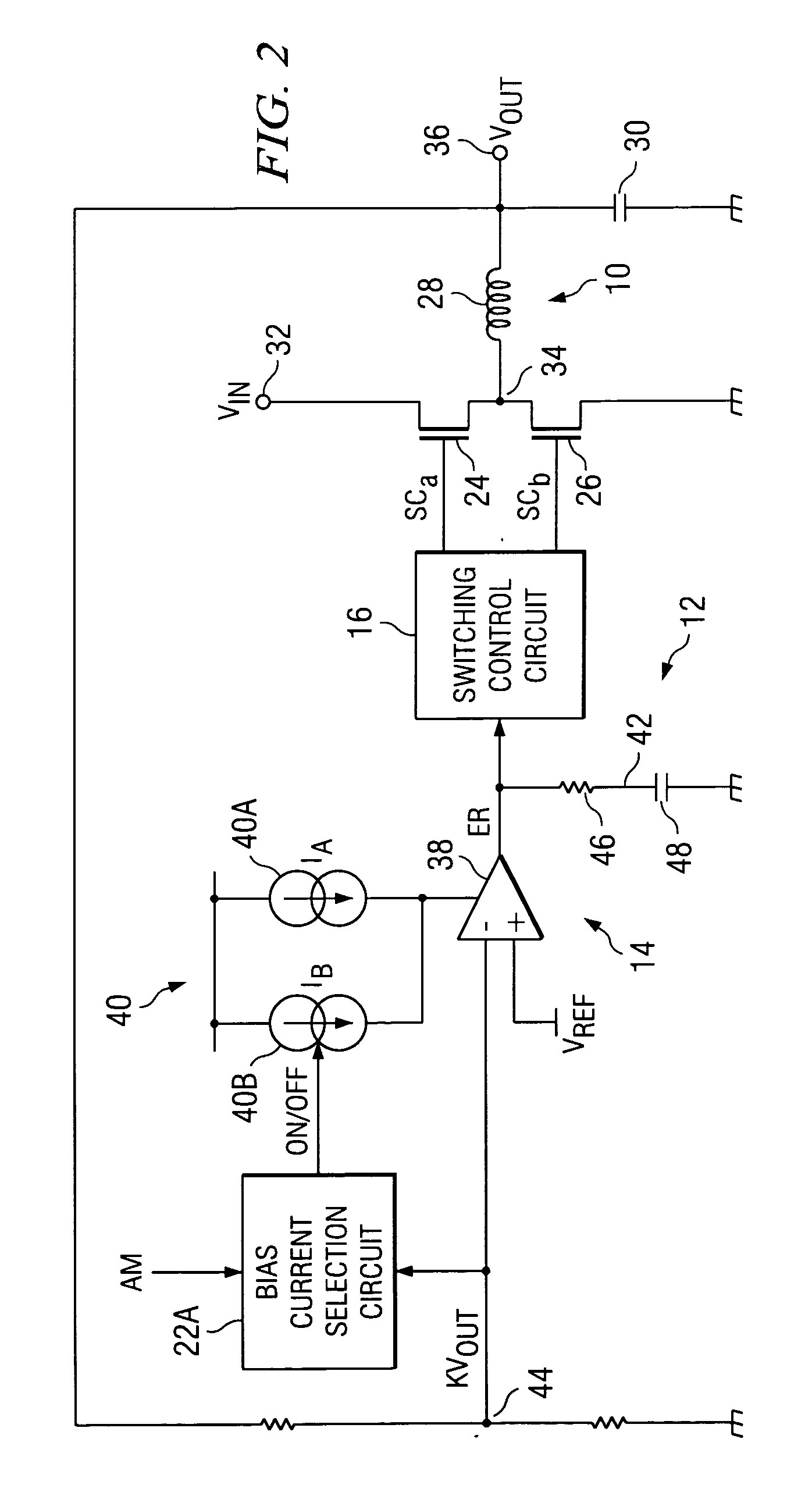DC-DC converter
- Summary
- Abstract
- Description
- Claims
- Application Information
AI Technical Summary
Benefits of technology
Problems solved by technology
Method used
Image
Examples
embodiment 1
[0037]FIG. 2 shows the configuration of the DC-DC converter disclosed in the first embodiment of the present invention. In this DC-DC converter, switching power supply unit 10 is a step-down chopper. It has MOSFET 24 for main switching and MOSFET 26 for synchronous rectification as the switching elements. The rectifying and smoothing circuit is comprised of choke coil 28 and smoothing capacitor 30.
[0038] More specifically, one of the terminals of MOSFET 24 for main switching is connected to power supply input terminal 32, which inputs DC input voltage Vin. The other terminal is connected to switching output terminal (node) 34. One of the terminals of MOSFET 26 for synchronous rectification is connected to switching output terminal (node) 34, while the other terminal is connected to ground potential. One of the terminals of choke coil 28 is connected to switching output terminal (node) 34, while the other terminal is connected to power supply output terminal 36, which supplies the D...
embodiment 2
[0053]FIG. 5 shows the configuration of the DC-DC converter disclosed in the second embodiment. In this figure, the parts having the same configuration or same function as those described in the first embodiment (FIG. 2) are represented by the same symbols, respectively.
[0054] In the second embodiment, in error amplifier 14, a constant bias current I is supplied constantly from constant current source circuit 40 to differential amplifier 38. Under the control of output resistance selection circuit 22B that corresponds to response characteristic selection circuit 22 (FIG. 1), the resistance of output resistor 46 in output circuit 42 is switched between RA and (RA+RB) by a switch 50. The magnitudes and the ratio of RA and RB can be set as desired. For example, the ratio can be set to RA:RB=1:1.
[0055] In general, in a DC-DC converter, input voltage Vin might also drop significantly within the scope of the normal operating conditions. For example, when the plug (DC output terminal) of...
PUM
 Login to View More
Login to View More Abstract
Description
Claims
Application Information
 Login to View More
Login to View More - R&D
- Intellectual Property
- Life Sciences
- Materials
- Tech Scout
- Unparalleled Data Quality
- Higher Quality Content
- 60% Fewer Hallucinations
Browse by: Latest US Patents, China's latest patents, Technical Efficacy Thesaurus, Application Domain, Technology Topic, Popular Technical Reports.
© 2025 PatSnap. All rights reserved.Legal|Privacy policy|Modern Slavery Act Transparency Statement|Sitemap|About US| Contact US: help@patsnap.com



